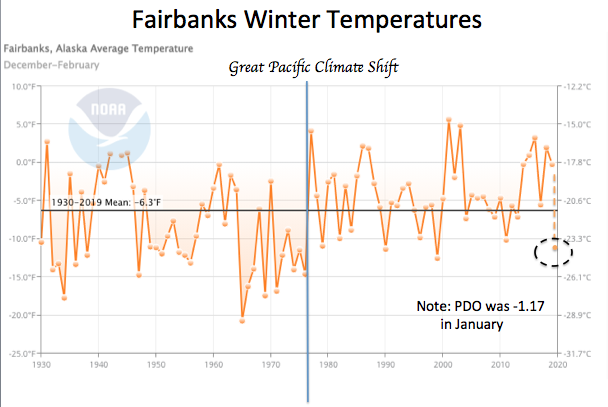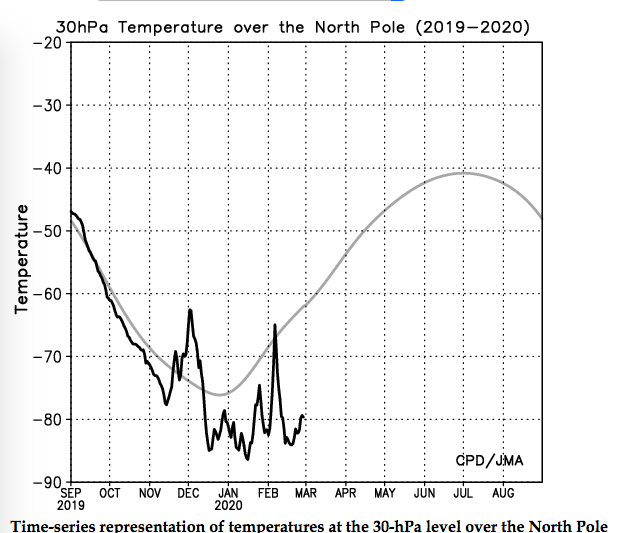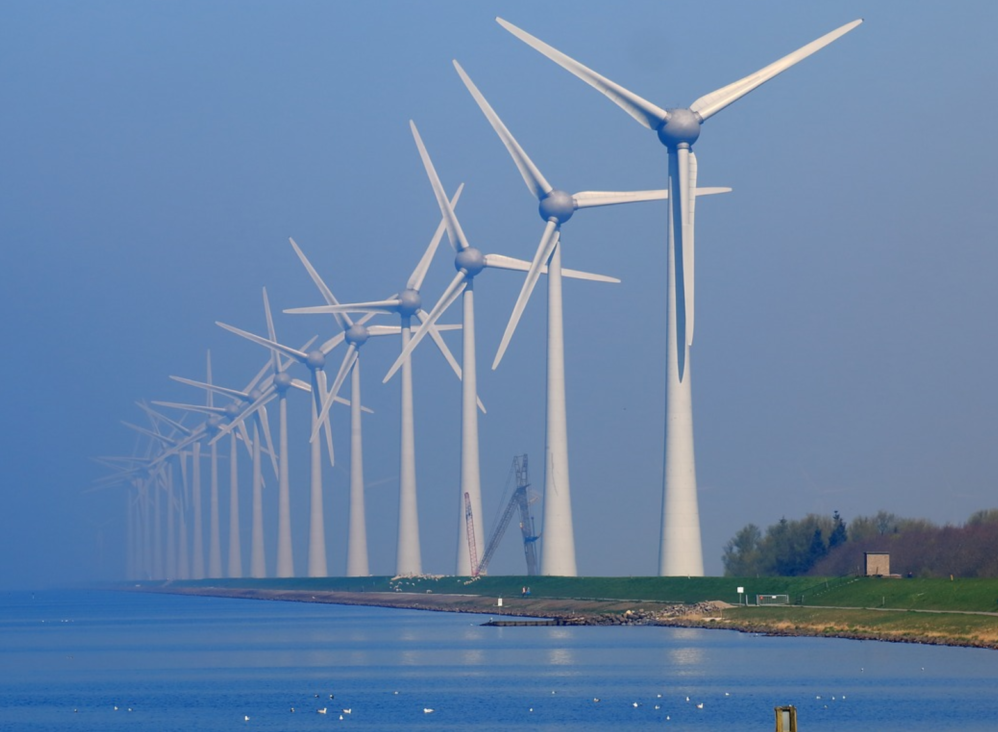The theme at this year’s World Economic Forum in Davos was “Stakeholders for a Cohesive and Sustainable World.” For a gathering of global movers and shakers, who want to improve the world “by engaging business, political, academic and other leaders of society to shape global, regional and industry agendas,” it was a deceptive and depressing thesis. It reflects how too many of these “leaders” succumb all to easily to pressure from hard-green environmentalists.
The “stakeholders” those leaders listen to never seem to represent blue collar workers or the world’s poorest citizens. The “solutions” they propose will lead to division and rebellion, not to cohesion. And the energy alternatives they offer to fossil fuels are anything but sustainable, renewable or eco-friendly.
I hope you enjoy my Davos discussion. Thank you for posting it, quoting from it, and forwarding it to your friends and colleagues.
Best regards,
Paul
——————-
Deceptive rhetoric at Davos could bring disaster
By Paul Driessen
There is nothing ‘cohesive’ or ‘sustainable’ about ‘solutions’ demanded by WEF ‘stakeholders’
The World Economic Forum conference in Davos, Switzerland is billed as the globe’s most prestigious annual gathering of movers and shakers. Its mission is to “improve the state of the world by engaging business, political, academic and other leaders of society to shape global, regional and industry agendas.”
This year’s theme was “Stakeholders for a Cohesive and Sustainable World.” Unfortunately, the lofty rhetoric belies the misleading, potentially disastrous realities of agendas supported by many participants.
A primary basis for this year’s theme is the repeated assertion that the world faces a climate cataclysm. European Commission president Ursula von der Leyen thus wants to tax carbon-based energy imports into the EU and end humanity’s practice of “taking resources from the environment and generating waste and pollution in the process.” She (and others) insist that “green energy” would do no such thing.
Climate crisis claims in turn are based on computer models that are only as good as the assumptions built into them – and on attempts to blame temperature changes, extreme weather events and future crises on fossil fuel emissions, because the assumptions and models say it’s a cause-effect relationship.
The most cited model is (naturally) the most extreme: RCP8.5, which predicts temperatures way above what we are actually measuring and all manner of future calamities. But it is based on the assumptions that: methane and plant-fertilizing carbon dioxide (a tiny 0.0402% of Earth’s atmosphere) are vastly more important than the sun in driving climate change; our planet will have 12 billion people by 2100; there will be no energy innovations over the next 80 years; and therefore coal use will increase tenfold by the end of the century. On that we’re supposed to base restrictive energy policies, and Davos meeting themes.
Who are the stakeholders that Davos attendees will consult? Greta Thunberg was invited, to present her patented tirade that fossil fuels are destroying her future. But no climate realists (alarmism skeptics) were given the podium, nor were representatives of EU or US factory workers or the world’s poorest citizens.
The good news is that several bankers made assurances that they were not going to stop lending funds to fossil fuel companies or “major polluters.” (Will that latter category include the mining companies that will have to provide voluminous raw materials for a US and global “green new deal,” as discussed below?) The bad news is that Davos bankers and politicians allow themselves to be pressured constantly primarily by far-left “stakeholders,” who hold the stakes that they and global ruling elites want to drive through the hearts of developed nation living standards and poor country aspirations for better lives.
Indeed, contrary to its assurances at Davos, despite consultation with indigenous peoples supposedly being a core company business principle, and without consulting with Alaska Native stakeholders who want to drill carefully and ecologically for oil and gas on their own lands, to improve their people’s living standards, Goldman Sachs has decided it will no longer fund such development in the Arctic.
With “mainstream” outlets and social media increasingly controlling news and opinion, and siding with climate alarmists and anti-fossil activists, that pressure will continue to build – to our great detriment.
Will Davos themes, agendas and policies usher in a more “cohesive” world? The opposite is infinitely more likely. Deprive people of abundant, reliable, affordable fossil fuel (and nuclear) energy, as eco-activists seek to do – and you deprive them of jobs, living standards, food, health and life. People die in droves (itself a goal of more rabid environmentalists panicked about an over-populated world). Implement “green new deal” policies, and the results will be anything but cohesion. The policies will bring rage, protests, violence and anarchy – as France and Chile vividly demonstrated over the past two years.
Turn African, Asian and Latin American countries into vassal states, with enormous mines serving “ecologically responsible, climate-focused” nations that don’t tolerate mining within their own borders – and any cohesion will rapidly disappear. Tell American, European and other families they must accept massive wind and solar installations in their backyards or off their coasts, and the results will be similar.
A “sustainable” world? Yes, fossil fuels are ultimately finite resources – hundreds of years from now, after we run out of huge coal deposits, oil and gas from fracking, methane hydrates and other supplies, assuming policy makers don’t lock them up and “keep them in the ground.” But long before that happens, human innovation will create far better alternatives than wind turbines, if we let creativity flourish.
Meanwhile, just remember: Wind and sunshine are sustainable. But lands and raw materials required for the technologies to harness this intermittent, widely disbursed energy absolutely are not.
Sustainability is a useful concept for assessing hidden costs, risks and fiduciary responsibilities – such as those associated with climate change, as we are constantly reminded. But we must apply those same considerations to wind, solar, battery and biofuel operations; and to impacts on habitats and wildlife, air and water quality, human health and wellbeing in green new deal mining and manufacturing regions, and human welfare in an energy-deprived world of increasing hunger, death, anger, riots and chaos.
As my new Heartland Institute reports and previous articles note, fossil fuels and nuclear currently provide over 8 billion megawatt-hours (MWh) of electricity and electricity-equivalent power annually, to meet America’s industrial, commercial, residential and transportation needs. Using solar to generate all that power – and charge batteries for a week of sunless days – would require 19 billion state-of-the-art sun-tracking photovoltaic panels, completely blanketing an area equal to all of New York and Vermont.
But that assumes the panels are all located where the sun shines with summertime Arizona intensity 24/7/365, which will never happen. So we’d probably have to double (perhaps even triple) the number of panels and affected acreage. The impacts on habitats and wildlife would be significant.
Using 1.8-MW wind turbines instead of solar panels would require more than 4 million turbines on farm, wildlife habitat and scenic lands equal to Arizona, Nevada, California, Oregon and part of Washington State combined. But the more we install, the more we have to put turbines in poor wind locations. We’d probably have to double (or even triple) the number of turbines, and acreage impacted. Their rapidly turning blades (200 mph at their tips) would slaughter millions of eagles, falcons, other birds and bats.
Going offshore instead would require hundreds of thousands of 650-foot-tall 10-MW turbines. Their impact on birds, bats, marine mammals, vistas, and ship and aircraft navigation would be intolerable.
Each 1.8-MW turbine requires some 1,200 tons of steel, copper, aluminum, rare earth elements, zinc, molybdenum, petroleum-based composites, reinforced concrete and other materials. Each ton of materials requires removing thousands of tons of rock and ore – and processing ores with fossil fuels. In fact, wind turbines need some 200 times more material per megawatt than a modern combined-cycle gas turbine!
Storing a week of electricity for windless and sunless periods would require some 2 billion half-ton Tesla car lithium-cobalt battery packs – and more materials; more mining. Connecting wind, solar and battery facilities to distant cities would require thousands of miles of new transmission lines, and more mining.
This doesn’t include materials to replace existing cars, trucks, heating systems and other technologies.
And that’s just for the United States. Imagine how many turbines, panels, batteries, transmission lines, raw materials, mines, processing plants and factories we’d need for a global transformation!
But green new deal advocates detest mining, at least by western mining companies in western countries. So it’s mostly done in faraway places that have virtually no environmental, health, safety, wage or child labor rules. Places like Inner Mongolia, where rare earth operations have fouled the air, created a huge toxic lake, and poisoned thousands of people. And Africa’s Congo, where 40,000 children labor in mines just for the cobalt needed in today’s cell phones, laptops and electric cars; not for any green new deal.
This eco-imperialism and false sustainability must end. As to all those self-styled stakeholders, You first. Lead by example. Slash your energy use and living standards. Then you can (nicely) ask the rest of us to do likewise. That means you, Greta, Leo DiCaprio, Al Gore, Emma Thompson and all the other climate scolds. (But of course they won’t. So why should we? And why should the world’s poor?)
Paul Driessen is senior policy analyst for the Committee For A Constructive Tomorrow (www.CFACT.org) and author of books and articles on environment, climate and human rights issues.






 Fairbank’s average 2019/20 daytime high was -2.1F, while the daytime low -20F, average daily mean was -11F!
Fairbank’s average 2019/20 daytime high was -2.1F, while the daytime low -20F, average daily mean was -11F!


 See how the polar high atmosphere (vertical cross section of temperature anomalies 60-90N) cooled dramatically after late December and remains that way at the end of meteorological winter. Temperatures there are record cold for so late.
See how the polar high atmosphere (vertical cross section of temperature anomalies 60-90N) cooled dramatically after late December and remains that way at the end of meteorological winter. Temperatures there are record cold for so late.


 Models suggest that continues at record low levels. Here is a two week forecast (50mb).
Models suggest that continues at record low levels. Here is a two week forecast (50mb).
.png)
 We lost a big chunk of winter in the lower 48 despite a cold start in November and very early December as the Madden Julian Oscillation shifted into warmer regions with the demise of the positive IOD in the Indian Ocean (that led to record crops in India and drought in Australia.) When it weakened and it started looking in the models the cold would return, the high arctic cold that danced for weeks with a warm pool settled into the western arctic. That meant a positive AO and NAO (and EPO) states that favor zonal flow into the land-masses from the oceans.
We lost a big chunk of winter in the lower 48 despite a cold start in November and very early December as the Madden Julian Oscillation shifted into warmer regions with the demise of the positive IOD in the Indian Ocean (that led to record crops in India and drought in Australia.) When it weakened and it started looking in the models the cold would return, the high arctic cold that danced for weeks with a warm pool settled into the western arctic. That meant a positive AO and NAO (and EPO) states that favor zonal flow into the land-masses from the oceans.



 Drugs – Widespread drug use became politicized in the late 1960s. It wasn’t just a matter of waving your freak flag high – it was also a means of putting it to the Man. Drugs, whether pot, acid, heroin, what have you, immediately turned America’s youth into an oppressed minority. Arrests of drug users created cynicism and bitterness. The Hard Left valorized users and addicts. Heroin use became endemic in the 1970s, leading to increased crime and destroying entire neighborhoods, particularly in the inner cities. Not a single policy created to “control” drugs accomplished anything other than increasing drug use and further damaging society. But that was the point.
Drugs – Widespread drug use became politicized in the late 1960s. It wasn’t just a matter of waving your freak flag high – it was also a means of putting it to the Man. Drugs, whether pot, acid, heroin, what have you, immediately turned America’s youth into an oppressed minority. Arrests of drug users created cynicism and bitterness. The Hard Left valorized users and addicts. Heroin use became endemic in the 1970s, leading to increased crime and destroying entire neighborhoods, particularly in the inner cities. Not a single policy created to “control” drugs accomplished anything other than increasing drug use and further damaging society. But that was the point.
